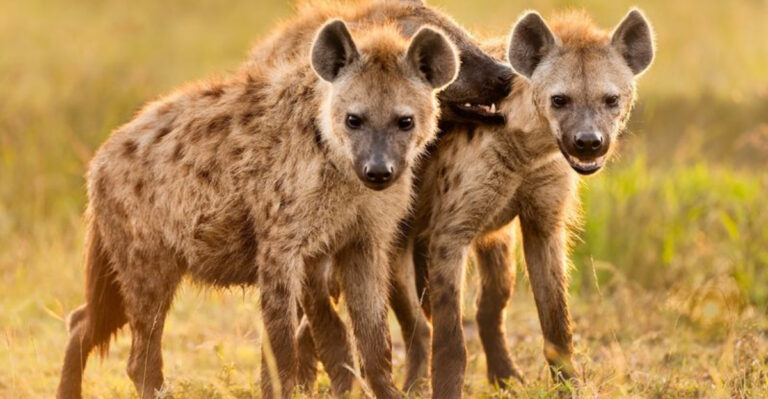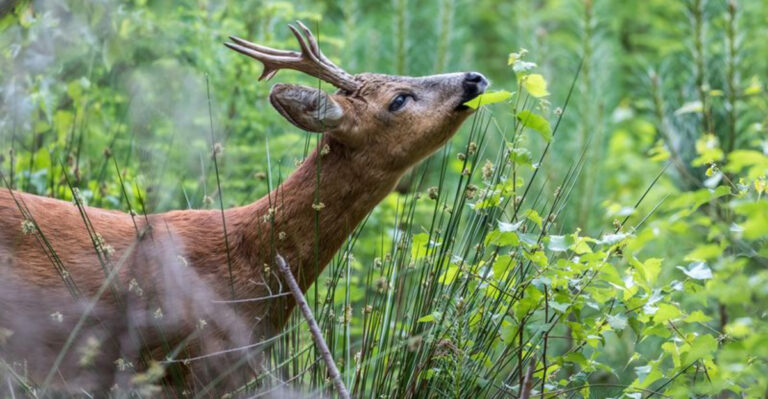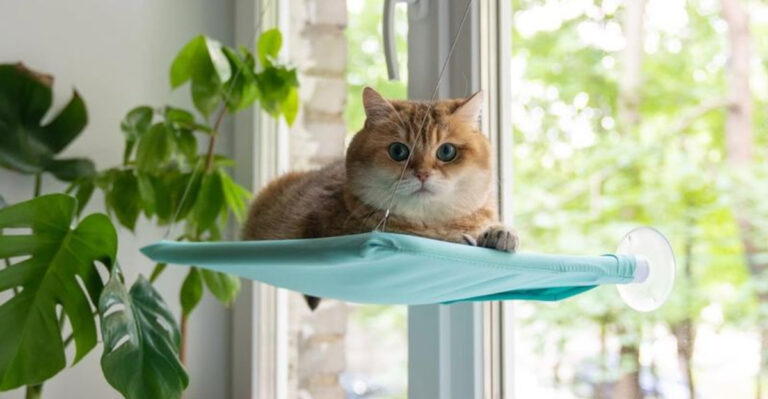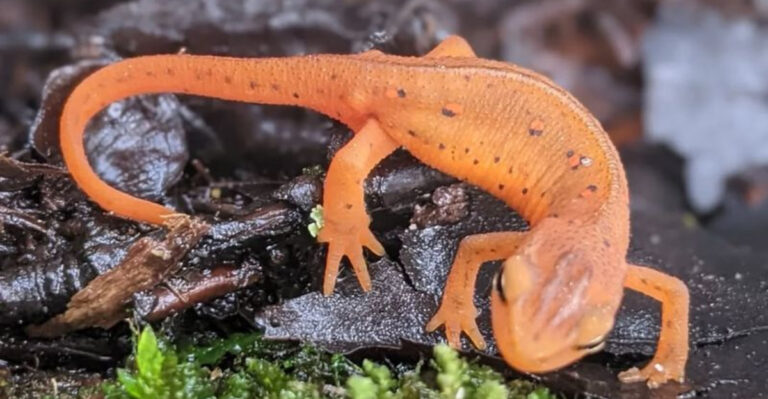How Do Outdoor Cats Brave The Cold? 22 Amazing Facts
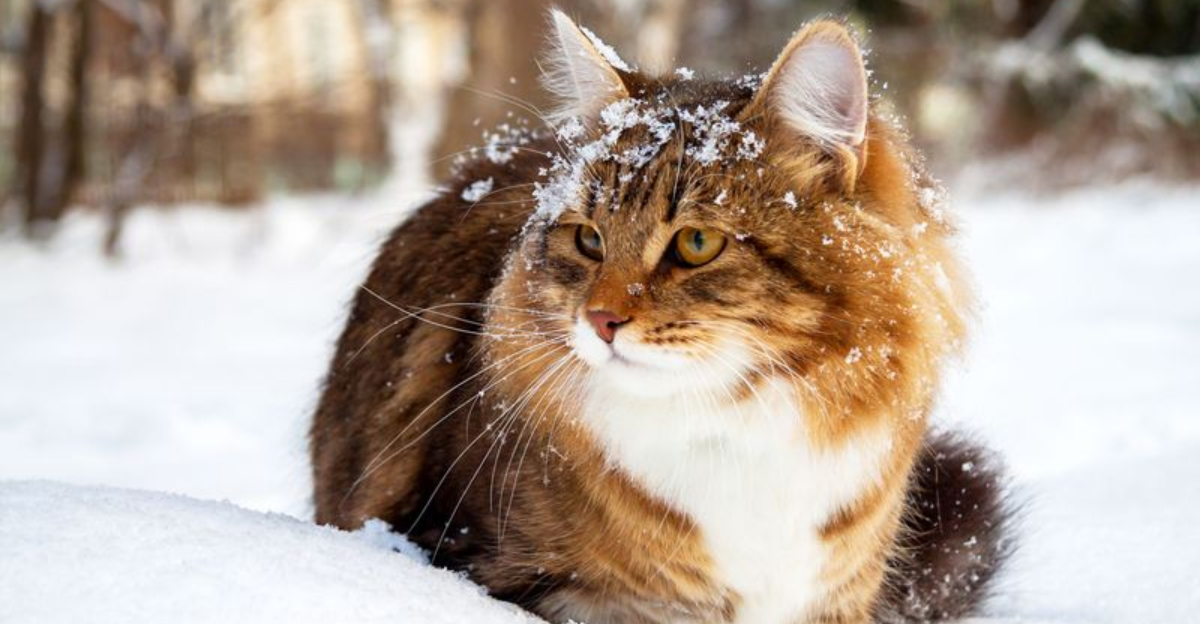
As snow begins to fall and temperatures drop, it’s easy to worry about the cats that live beyond our cozy homes. But outdoor cats are tougher than they look.
With sharp instincts and a survival toolkit built by nature, they face winter’s bite with surprising grace. Here are remarkable ways outdoor cats navigate winter’s toughest challenges.
1. Snow-Digging Paws
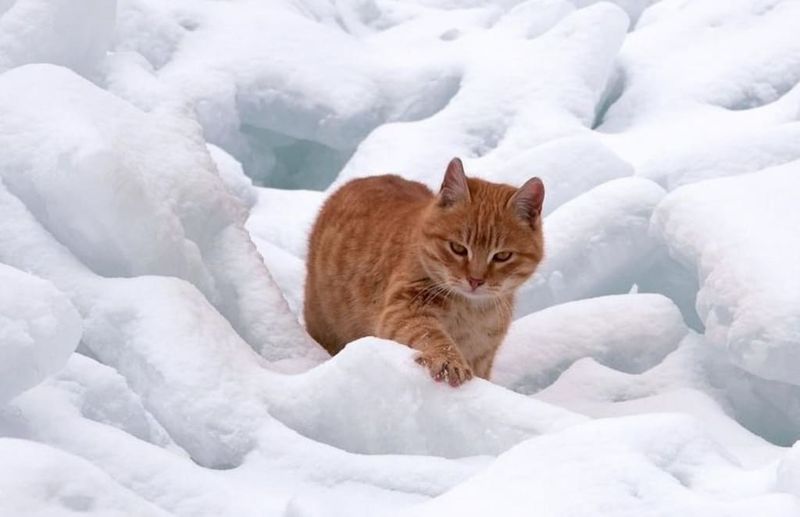
Cats have evolved to make use of their paws to dig through snow. This ingenuity allows them to search for hidden food sources, such as rodents. With a twist of their agile paws, they can uncover potential meals even when the ground is blanketed in snow.
Their paws are equipped with sharp claws that help break through the icy crust, giving them access to what’s underneath. This skill is crucial for their survival, as it allows them to hunt and feed during the harshest winter months.
2. Snowball Play And Exercise
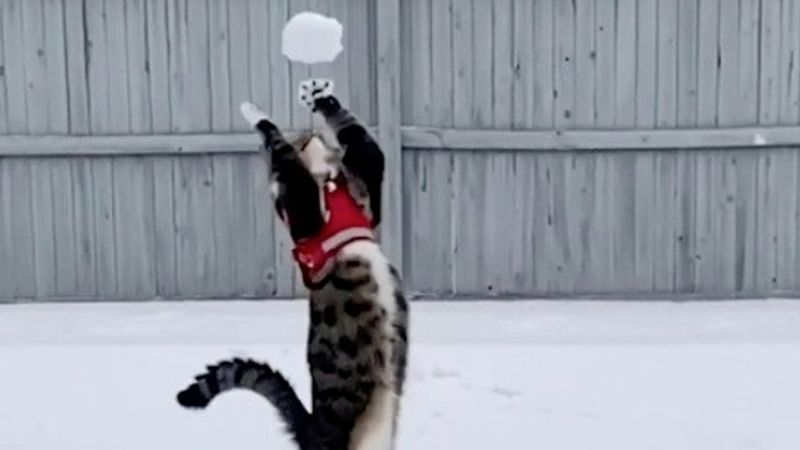
Snow provides a unique playground for outdoor cats. Engaging in play with snowballs offers them exercise, which is essential to keep warm and maintain their fitness. They pounce, chase, and bat at the snow, turning the frigid environment into a source of fun.
This playful activity is more than just entertainment. It stimulates their hunting instincts and keeps their muscles toned, necessary for enduring the cold. It also helps in generating body heat, crucial for survival.
3. Thickened Fur Coats
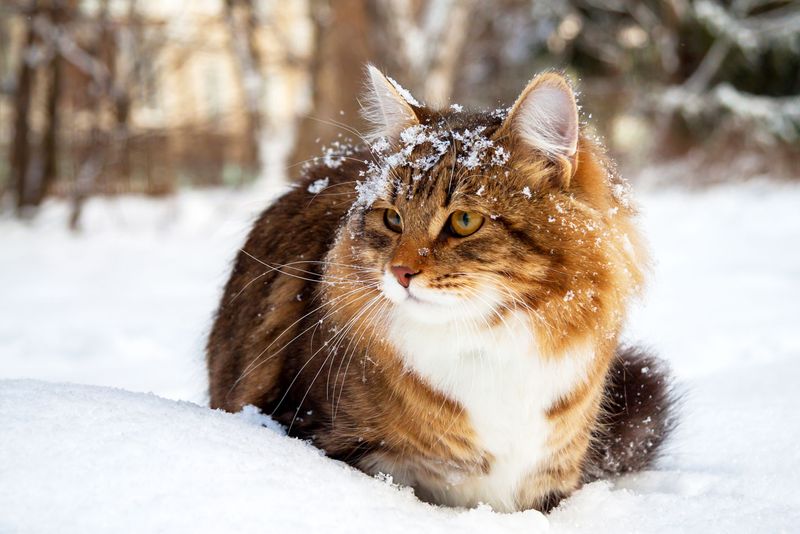
The beauty of winter lies not only in its snowy landscapes but in the way outdoor cats flaunt their winter wear. Their coats thicken in response to dropping temperatures, providing natural insulation. This transformation is akin to us wearing a snug, down-filled parka. Cats, however, pull off their plush looks without the burden of shopping for the right size.
Thickened fur isn’t just about warmth; it acts as a barrier against moisture. With their coats repelling snow like a well-waxed car, cats maintain a dry and cozy underlayer. The tactile sensation of their winter coat can only be described as petting a cloud.
This adaptation doesn’t happen overnight. As daylight hours decrease, a cat’s body cleverly signals the need for a thicker coat, shedding the old and ushering in the new. Perhaps it’s nature’s runway show, showcasing how function meets fashion in the feline world. Though they don’t strut on catwalks, outdoor cats have perfected the art of staying warm, proving that sometimes, Mother Nature is the best designer.
4. Finding Warm Shelter
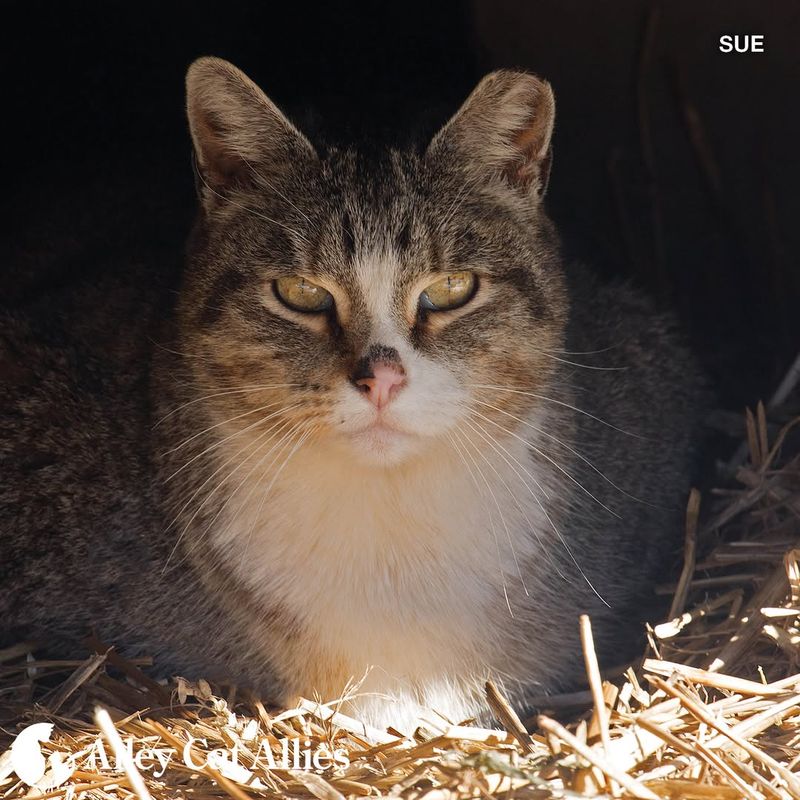
Cats have a knack for finding the coziest nooks and crannies, a skill particularly honed during winter months. When the chill sets in, outdoor cats embark on a quest for warmth, transforming into miniature architects. They utilize their environment to construct shelters from leaves, twigs, and whatever else nature provides.
These makeshift shelters offer a retreat from the biting wind and snow. Think of them as tiny log cabins, sans the logs. Under a pile of leaves or hidden away in a thicket, cats find or create their perfect hideaway. It’s survival DIY at its finest, with no instruction manual required.
But it’s not all roughing it in the wild. Many outdoor cats smartly seek out human-made structures. A garage corner, beneath a porch, or even a forgotten shed becomes a luxury suite when temperatures drop. Ingenious and adaptable, these felines turn any nook into a warm haven, showcasing their resourcefulness and survival instincts. Their ability to adapt shelters to the environment underscores their prowess in enduring harsh winter conditions.
5. Strategic Hunting Techniques
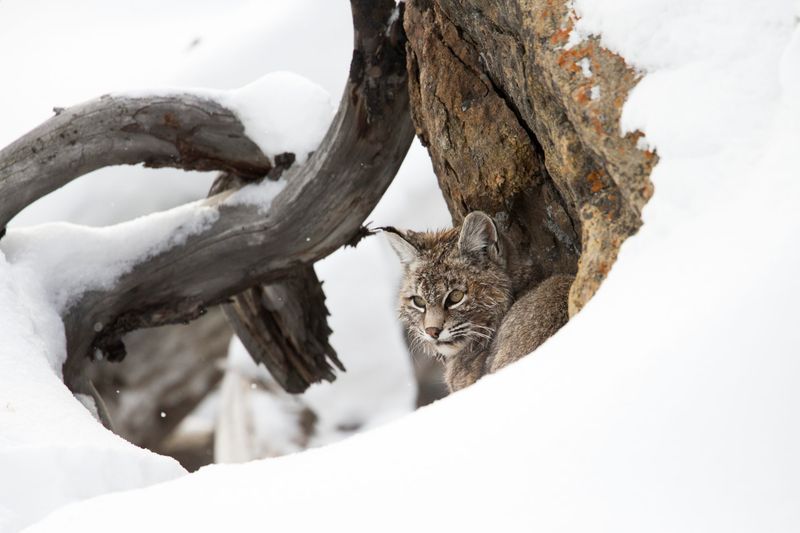
While snow blankets the ground, making it look like a serene winter wonderland, outdoor cats are on a mission. Their hunting instincts sharpen with each snowfall, turning them into stealthy predators. The art of the hunt takes center stage as they adapt their techniques for the frosty conditions.
Hunting in winter is no walk in the park. The snow crunches underpaw, threatening to betray their presence. However, these crafty cats learn to move with the grace of a ballet dancer, minimizing noise and maximizing stealth. Their patience is tested, but the rewards—a hearty meal—make it worthwhile.
The landscape, though barren, offers opportunities. Cats utilize the cover of snow and the starkness of bare trees to blend in, becoming nearly invisible to unsuspecting prey. It’s a snowy stage where their strategic prowess shines, proving that when the going gets tough, the tough get hunting. Outdoor cats, with their keen senses and tactical instincts, thrive as winter warriors in the animal kingdom.
6. Utilizing Body Heat
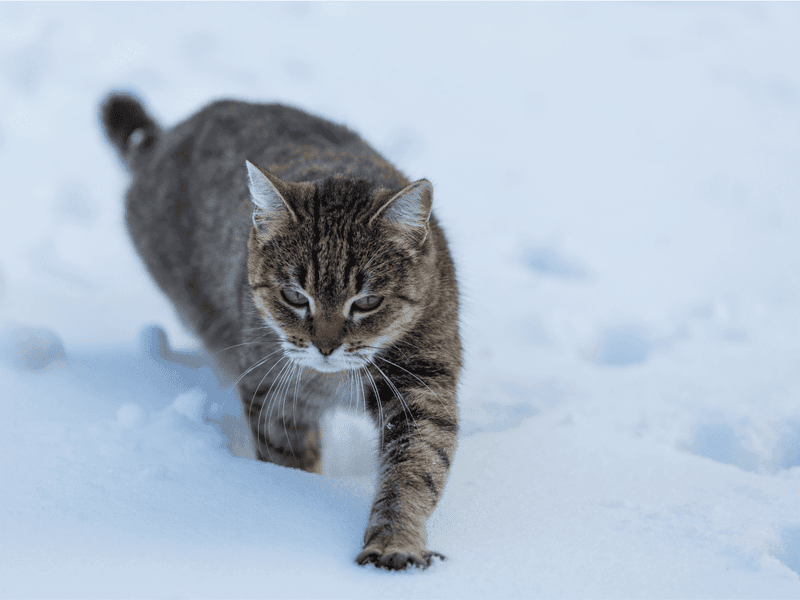
When the cold bites, outdoor cats turn to the best source of warmth—themselves. Cats are experts at conserving heat, often curling into tight balls, resembling furry doughnuts. This position minimizes heat loss, turning their own bodies into cozy heaters.
It’s not just about curling up solo. Cats are social when it comes to warmth, often seen cuddled up with feline friends. This group effort is a classic case of strength in numbers—more bodies mean more heat. It’s like a feline sleepover, where the main activity is staying warm.
Even in solitude, cats know how to maximize their body heat. They find sunlit spots or sheltered areas where heat is retained, turning these spots into personal saunas. With a knack for seeking warmth and a communal spirit, outdoor cats demonstrate that survival isn’t just about braving the cold but embracing warmth in all its forms. They remind us that sometimes, the best way to stay warm is by sticking together.
7. Enhanced Night Vision
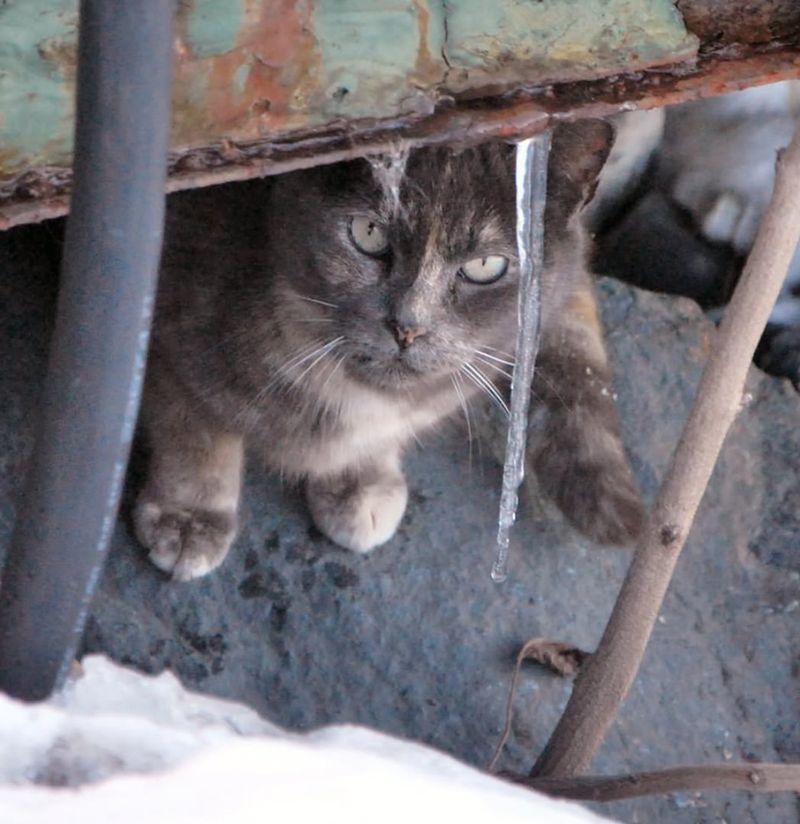
While most of us are snuggled under blankets, outdoor cats are prowling through the night, showcasing their remarkable night vision. Their eyes, which seem to glow like tiny lanterns, are finely tuned for nocturnal adventures. This ability gives them an edge, especially during the long, dark winter nights.
Their night vision is due to a special layer of cells in their eyes called the tapetum lucidum. This structure reflects light, allowing cats to see in near darkness—a handy trait for hunting and navigating in the absence of sunlight. It’s as if they have built-in night-vision goggles, minus the tech.
Snowy landscapes can be disorienting, but not for these felines. The contrast between the dark night and bright snow is no match for their keen eyesight. Outdoor cats glide through the night with confidence, their eyes guiding them through the winter wilderness. In the animal kingdom, their night vision is a superpower, proving that sometimes, the best survival tool is simply a sharp pair of eyes.
8. Feline Flexibility
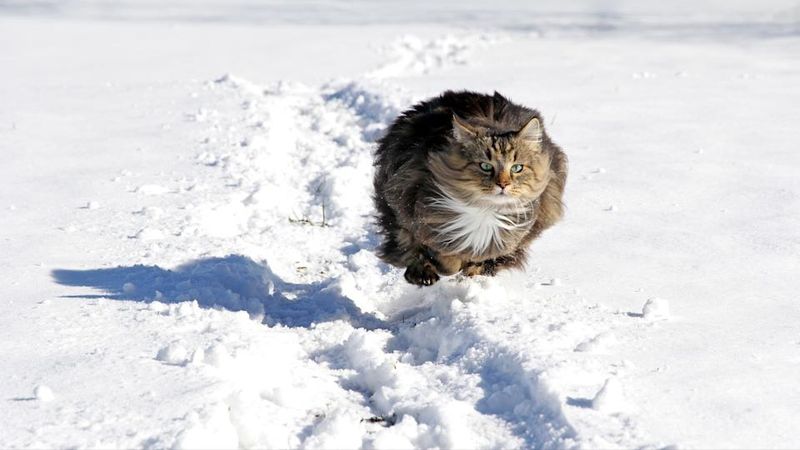
In a world of obstacles, outdoor cats are the yoga masters of the animal kingdom. Their flexible bodies allow them to navigate tight spots and precarious positions, an essential trait for winter survival. It’s as if they have been taking secret Pilates classes, gaining the agility needed to face any challenge.
Whether it’s squeezing through narrow gaps or scaling trees, their limber frames make it possible. This flexibility is not just physical but strategic. Cats can quickly change direction during a hunt or escape predators, weaving through the wintry landscape with ease.
Their elastic prowess is a marvel to watch, especially when they contort into seemingly impossible shapes. Outdoor cats exemplify how adaptability and physical dexterity go hand in hand, allowing them to thrive even when the environment is less than welcoming. Their ability to maneuver through winter’s hurdles is a testament to their resilient spirit and survival skills.
9. Efficient Metabolism
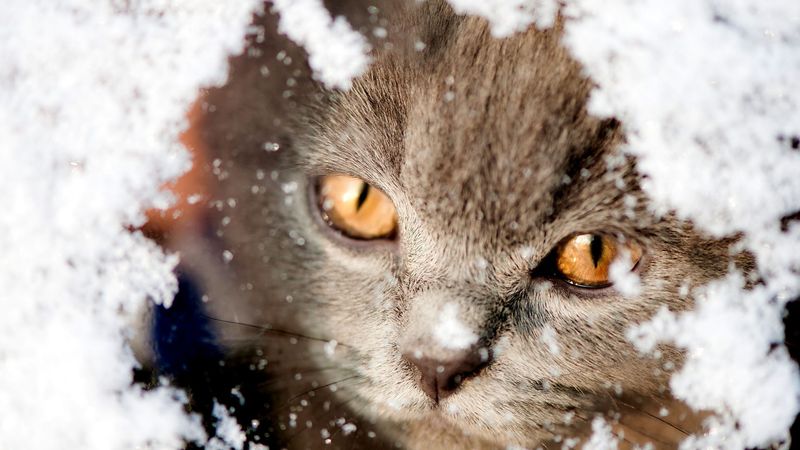
When temperatures drop, it’s not just about wearing a thicker coat or finding shelter. Outdoor cats rely on their efficient metabolism to fuel their winter antics. This internal furnace keeps them warm and active, allowing them to chase after prey or frolic in the snow with energy to spare.
Their metabolism kicks into high gear during the colder months, processing food with remarkable efficiency. This means more energy is available for staying warm and active. It’s like having a fast-charging battery that keeps them ready for action, no matter the weather.
This metabolic prowess ensures that they maintain their body weight, despite the increased energy demands. Outdoor cats have perfected the art of balancing intake and expenditure, proving that sometimes, survival is an inside job. Their ability to remain energetic and healthy during winter showcases their adaptability and resilience, making them masters of their frosty domain.
10. Keen Sense Of Smell
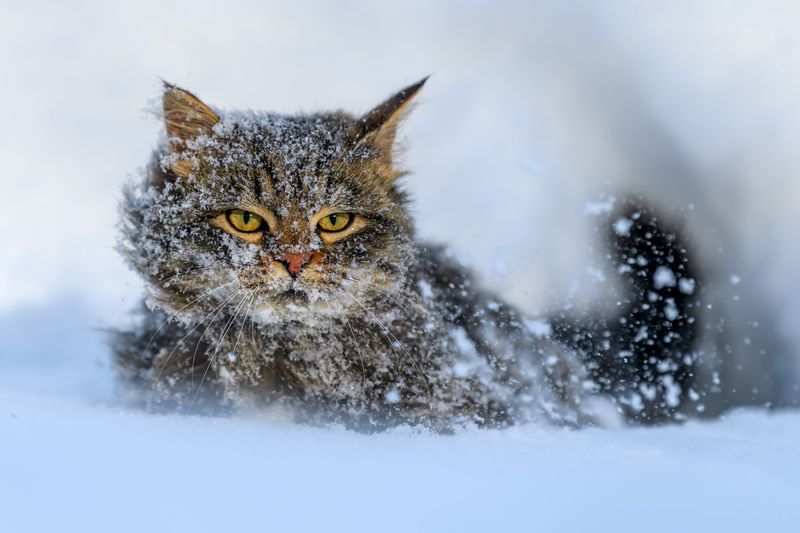
A sharp sense of smell is a valuable asset for outdoor cats, especially during winter. With snow covering familiar scents, these feline detectives rely on their olfactory prowess to navigate and hunt. They are like sommelier of the animal world, discerning the faintest whiff from miles away.
This heightened sense allows them to detect prey hidden beneath the snow or lurking in the shadows. Their noses are finely tuned instruments, picking up on scents that might escape other creatures. It’s a sixth sense that guides them through the winter landscape, ensuring they never miss a meal.
Beyond hunting, their sense of smell helps them avoid danger, sniffing out predators or other threats. This ability is crucial for survival, providing both offensive and defensive advantages. Outdoor cats demonstrate that in the grand theater of nature, having a keen nose is just as important as sharp claws, allowing them to thrive in even the harshest of winters.
11. Adaptability To Temperature Changes
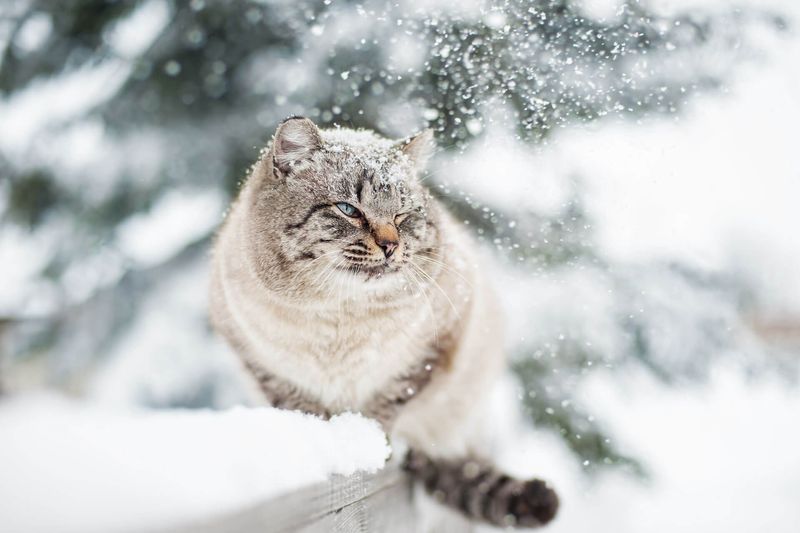
One might say outdoor cats are the chameleons of the mammalian world. Their ability to adapt to temperature fluctuations is nothing short of extraordinary. Whether basking in a rare winter sunbeam or braving a sudden snowstorm, they adjust with a grace that would make a meteorologist envious.
This adaptability is rooted in their physiology. Cats can regulate their body temperature with precision, conserving energy when it’s cold and expelling heat when it’s warm. It’s an internal thermostat that keeps them comfortable in a variety of conditions.
Their adaptability extends beyond mere survival. It allows them to enjoy the winter season, exploring their snowy territories with confidence. Outdoor cats show that when it comes to facing unpredictable weather, flexibility is key. Their ability to adjust to temperature changes highlights their resilience and versatility, proving they are true connoisseurs of the natural world.
12. Using Snow As Camouflage
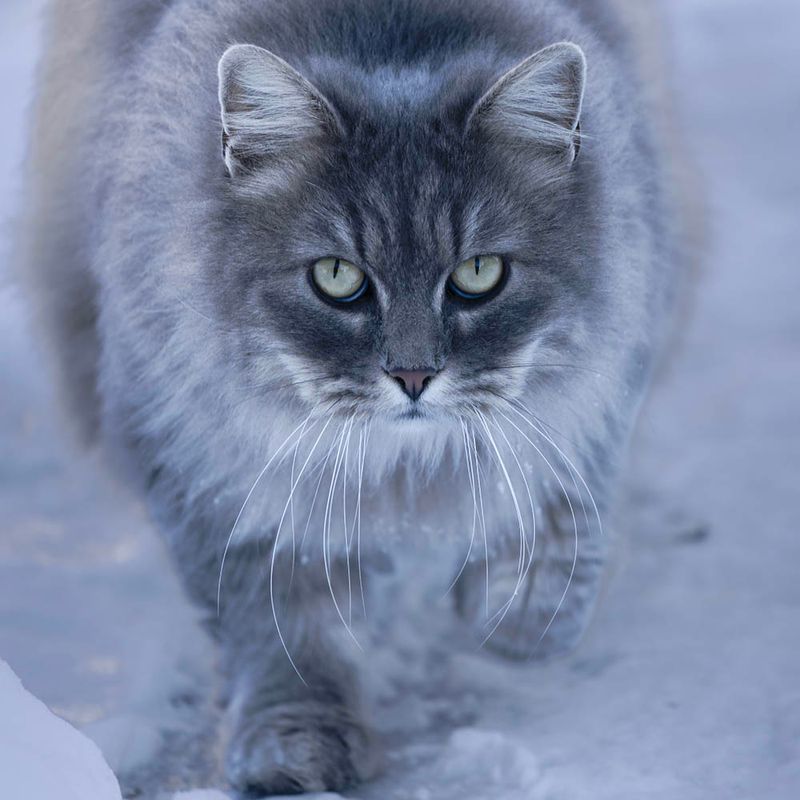
When winter coats the world in white, outdoor cats turn into masters of disguise. The snow becomes their canvas, allowing them to blend seamlessly with the landscape. It’s a tactical advantage that aids in both hunting and evasion, making them the stealthy ninjas of the animal realm.
This natural camouflage is not just about having a white coat. Cats have an uncanny ability to merge with their environment, whether hunkering down in a snowdrift or lurking in the shadow of a tree. Their instinctual knowledge of where and how to position themselves is fascinating.
The art of camouflage serves multiple purposes. It allows them to approach prey undetected, increasing their success rates. Additionally, it provides a level of protection, helping them avoid predators. Outdoor cats demonstrate that in nature, sometimes the best protection is simply not being seen. Their ability to use snow as camouflage is a testament to their cunning and adaptability.
13. Vibrant Whiskers As Sensory Tools
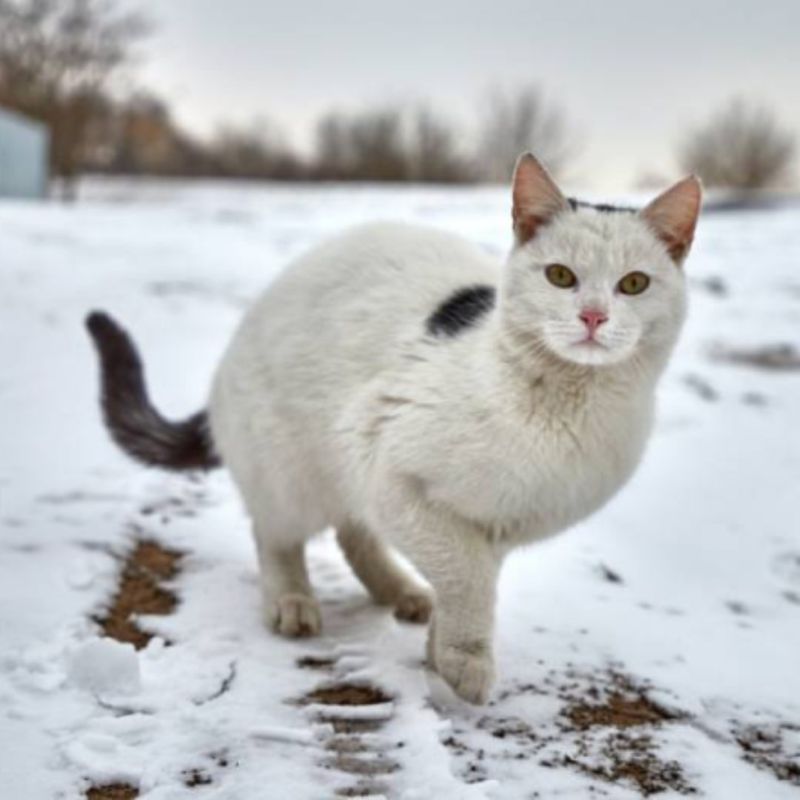
Whiskers, those fanciful feline features, are not just for show. For outdoor cats, they are vital sensory tools, especially during winter. These delicate hairs, known as vibrissae, are finely tuned instruments that help cats navigate their icy surroundings with precision.
In the dark of night or when snow obscures visibility, whiskers play a crucial role. They detect changes in air currents and help measure gaps, ensuring cats don’t get stuck in tight spots. It’s like having a built-in GPS, guiding them through the winter landscape with ease.
Beyond navigation, whiskers contribute to their hunting prowess. They sense the slightest movements, providing valuable information about nearby prey. Outdoor cats, with their vibrant whiskers leading the way, remind us that sometimes, the smallest details make the biggest difference. Their whiskers are a testament to nature’s ingenuity, proving that even in the harshest conditions, adaptation is key to survival.
14. Silent Paws For Stealth
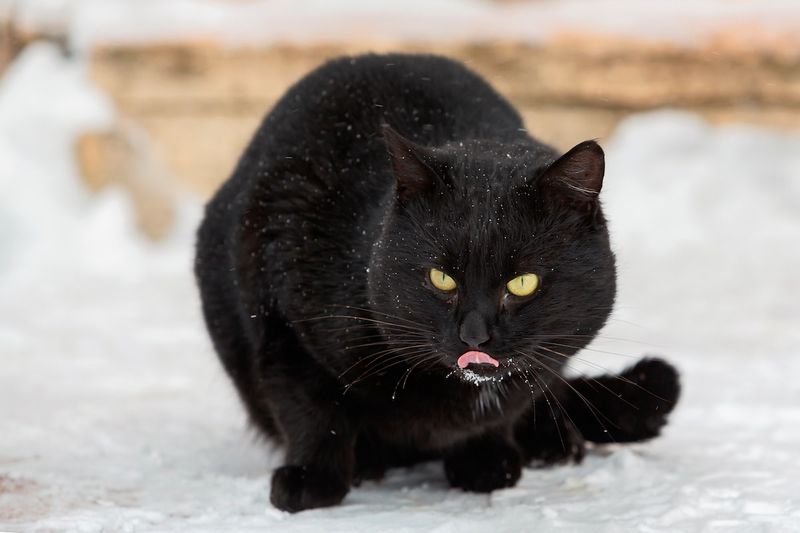
Outdoor cats are the James Bonds of the animal kingdom, moving with a stealth that would make any secret agent proud. Their silent paws are key to this covert operation, allowing them to glide through the snow with barely a whisper. It’s an art form that aids in both hunting and avoiding detection.
The structure of a cat’s paw, with its soft pads and retractable claws, is perfectly suited for silent movement. Even in crunchy snow, they manage to tread lightly, leaving behind only the faintest traces of their passage. It’s as if they’ve mastered the art of levitation.
This stealth isn’t just for show. It’s a crucial survival tool, helping them approach prey undetected or slip away from potential threats. Outdoor cats, with their whisper-quiet footsteps, demonstrate that sometimes, the best strategy is to move like a shadow. Their silent paws are a testament to their survival instincts, proving that in the world of winter, silence is golden.
15. Tail As A Balancing Tool
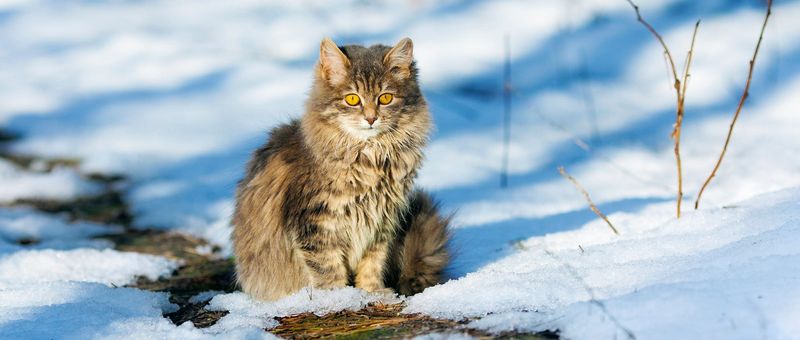
In a wintry world of slippery slopes and precarious perches, an outdoor cat’s tail is more than just a fluffy appendage. It’s a sophisticated balancing tool, providing stability and grace as they navigate their icy terrain. It’s as if their tails have a mind of their own, guiding them with precision.
The tail acts as a counterbalance, helping maintain equilibrium when walking along narrow ledges or making daring leaps. It’s their natural tightrope walker’s pole, ensuring they remain agile and sure-footed, even in the trickiest situations.
Beyond balance, the tail also serves as a communication tool, conveying emotions and intentions to other cats. In the winter wilderness, it’s a multipurpose marvel, proving that sometimes, the most overlooked features are the most essential. Outdoor cats, with their tails held high, navigate the snowy landscape with confidence and flair, showcasing their adaptability and expert survival skills.
16. Ears As Thermal Detectors
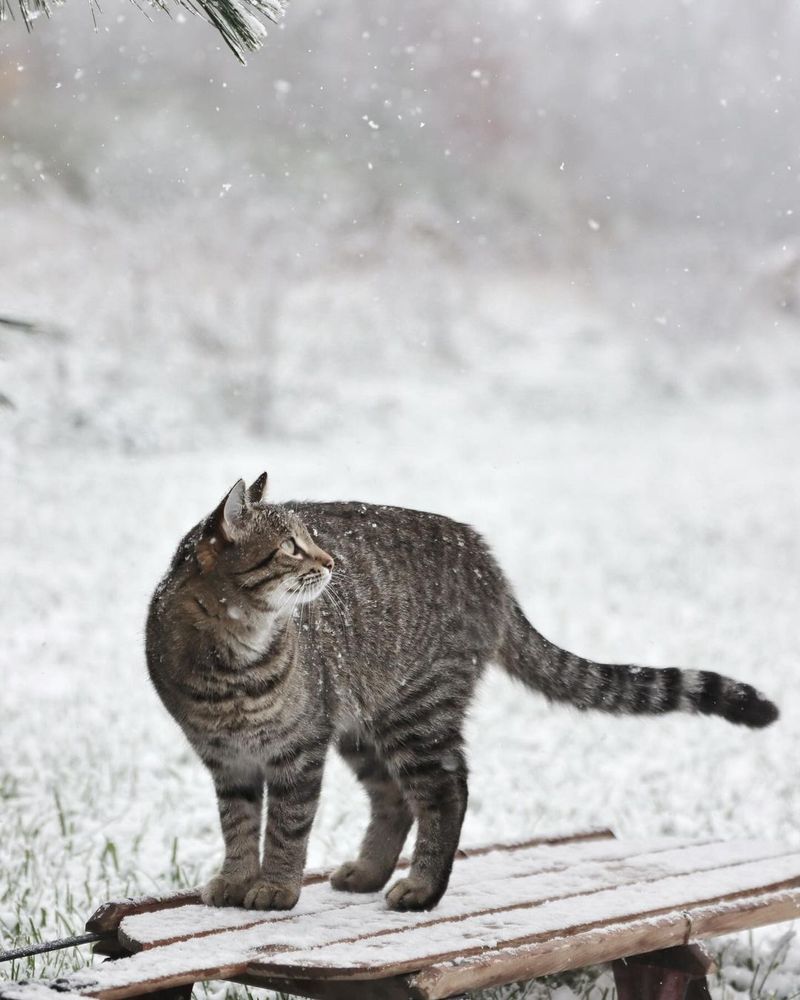
Ears are not just for listening when it comes to outdoor cats; they are also excellent thermal detectors. These feline radar dishes help them identify warm spots and potential prey, even in the biting cold. It’s a sensory superpower that enhances their winter survival tactics.
The shape and sensitivity of a cat’s ears allow them to pick up subtle changes in temperature. This ability is particularly useful in winter, guiding them towards warmer microclimates or identifying the body heat of hidden prey. It’s like having a built-in thermal camera.
This thermal detection helps them make strategic decisions, such as where to rest or when to pounce. Outdoor cats, with their finely tuned ears, remind us that sometimes, the key to thriving is simply listening to the environment. Their ears are a testament to the adaptability and resilience of these winter warriors, proving that survival often comes down to what you can sense.
17. Purring As A Self-Soothing Mechanism
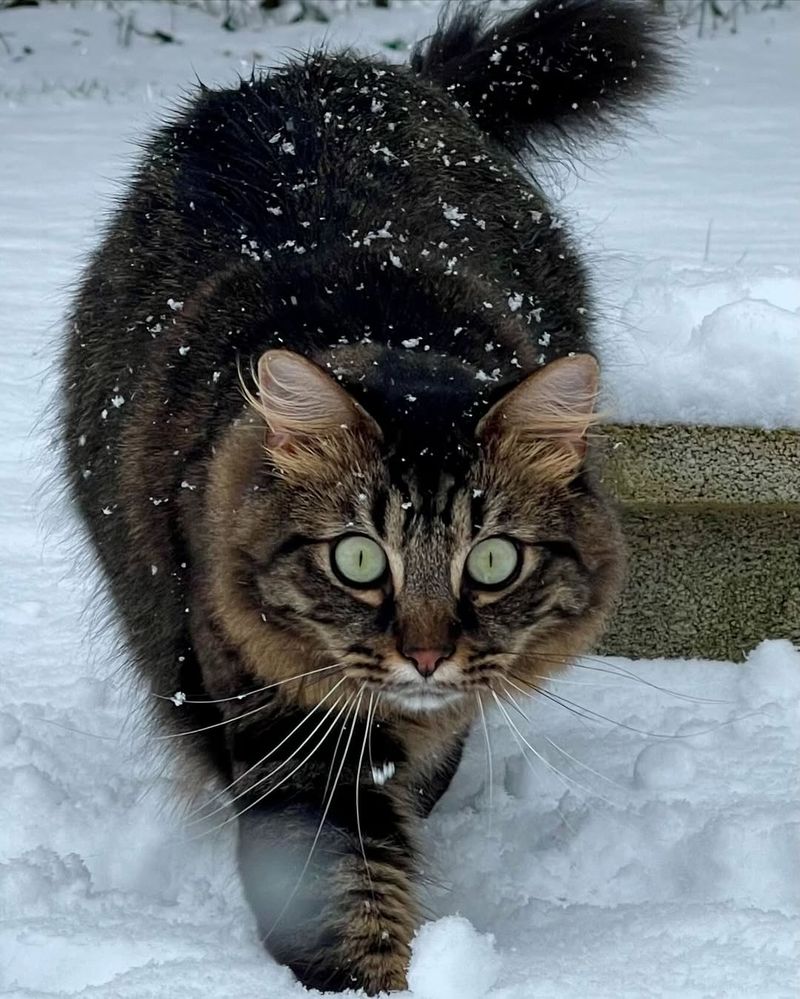
Purring, that charming feline hum, is more than just a sign of contentment. For outdoor cats, it serves as a self-soothing mechanism, providing comfort and even promoting healing during the harsh winter months. It’s like having an internal spa day, complete with soothing vibrations.
The act of purring releases endorphins, reducing stress and creating a sense of calm. This is particularly beneficial when facing the uncertainties of winter. It’s a natural way to cope with the cold, loneliness, or even minor injuries, offering a touch of warmth from within.
Beyond emotional benefits, purring has physical advantages. The vibrations can promote healing, assisting in recovery from wear and tear. Outdoor cats, with their melodious purrs, demonstrate that sometimes, the best way to thrive in adversity is to tune into one’s own rhythm. Their purring is a testament to the power of self-care, illustrating that survival includes both body and mind.
18. Seasonal Weight Gain
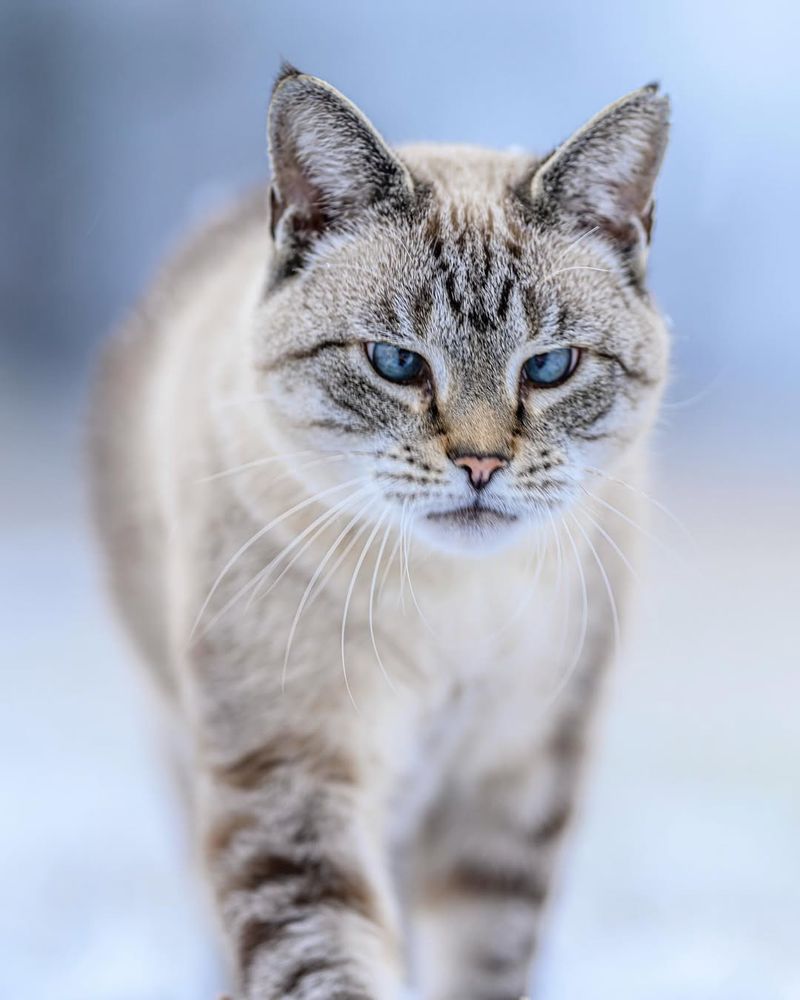
When winter approaches, outdoor cats have a strategy that would make any hibernating bear proud—seasonal weight gain. This natural bulking up provides a crucial energy reserve, helping them withstand the cold and scarcity of food. It’s the feline version of winterizing a vehicle, ensuring they’re ready for whatever the season throws their way.
This weight gain isn’t about letting themselves go; it’s a calculated survival tactic. The additional fat acts as insulation, keeping them warmer when temperatures plummet. It’s like having an extra layer of fur, but on the inside.
Moreover, this increased body mass provides vital energy reserves, essential for maintaining their active lifestyle. Outdoor cats manage to balance indulgence with practicality, proving that sometimes, the best way to prepare for winter is to embrace a little extra padding. Their seasonal weight gain showcases their adaptability and wisdom, ensuring they remain robust and resilient as the snow falls.
19. Instinctual Weather Forecasting
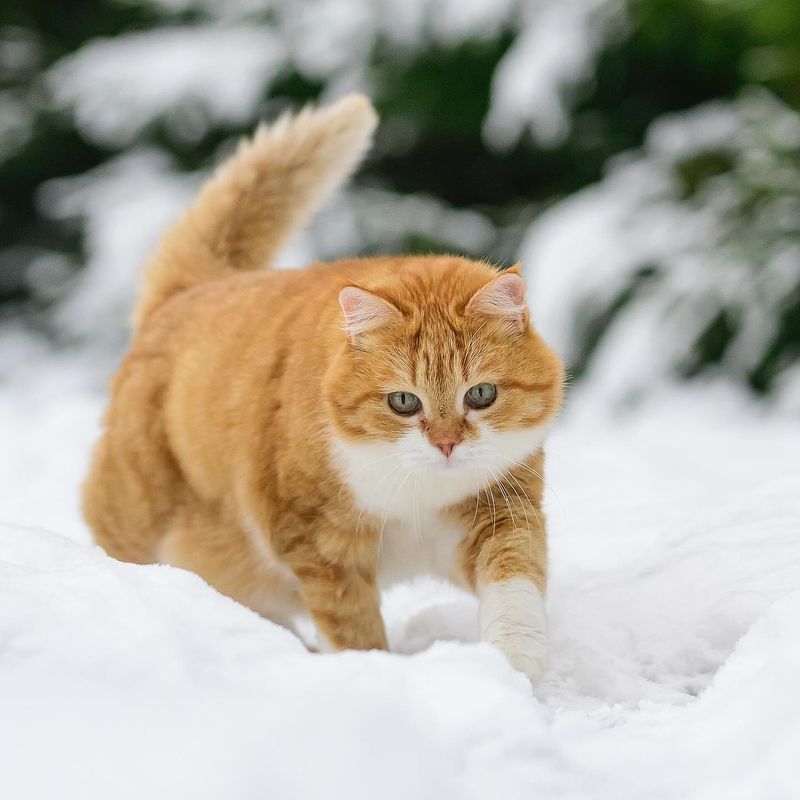
Outdoor cats possess a mysterious ability that seems almost magical—their talent for instinctual weather forecasting. It’s as if they have a direct line to the cat gods, receiving updates on upcoming storms or temperature drops. This foresight allows them to prepare and adapt to changing conditions with uncanny accuracy.
Cats often exhibit subtle behavioral changes before significant weather shifts. Whether it’s seeking shelter ahead of a snowstorm or adjusting their hunting habits in anticipation of a thaw, their actions are a weather report in themselves. It’s a blend of instinct and experience that guides them through winter’s uncertainties.
This intuitive forecasting helps them navigate the harshest conditions, making strategic decisions that ensure their survival. Outdoor cats, with their enigmatic weather predictions, remind us that sometimes, the best tool for survival is simply intuition. Their ability to anticipate weather changes is a testament to their connection with nature, proving that in the world of winter, instinct is everything.
20. Feline Social Networks
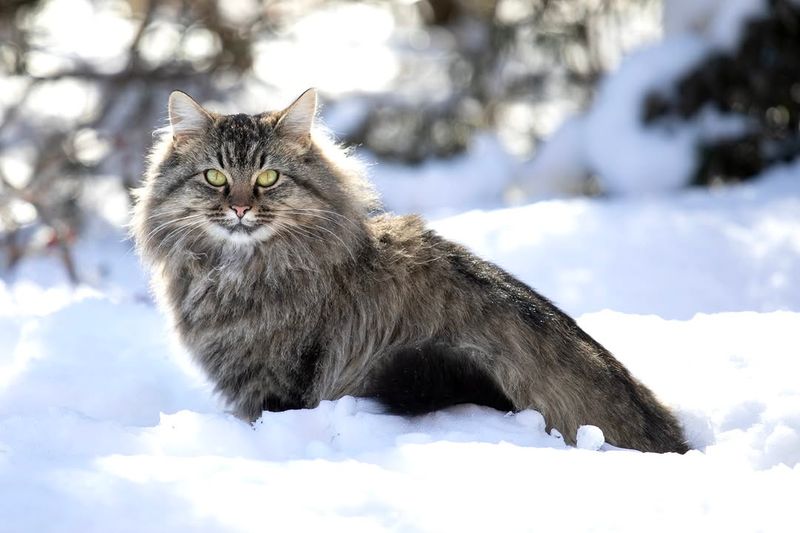
While we think of cats as solitary creatures, outdoor cats are social butterflies when it comes to survival. Their feline social networks provide warmth, companionship, and shared resources during the challenging winter months. It’s a community effort that enhances their resilience and adaptability.
These networks facilitate information exchange, such as the best hunting spots or the warmest shelters. Cats form alliances, often seen sharing body heat or food. It’s a feline version of a potluck, where everyone contributes to the collective well-being.
Beyond practicality, these social bonds offer emotional support, reducing stress and increasing their overall chances of survival. Outdoor cats, with their intricate social dynamics, demonstrate that sometimes, the best way to thrive in adversity is together. Their social networks are a testament to the power of community, illustrating that in winter, as in life, teamwork often leads to success.
21. Innate Curiosity And Exploration
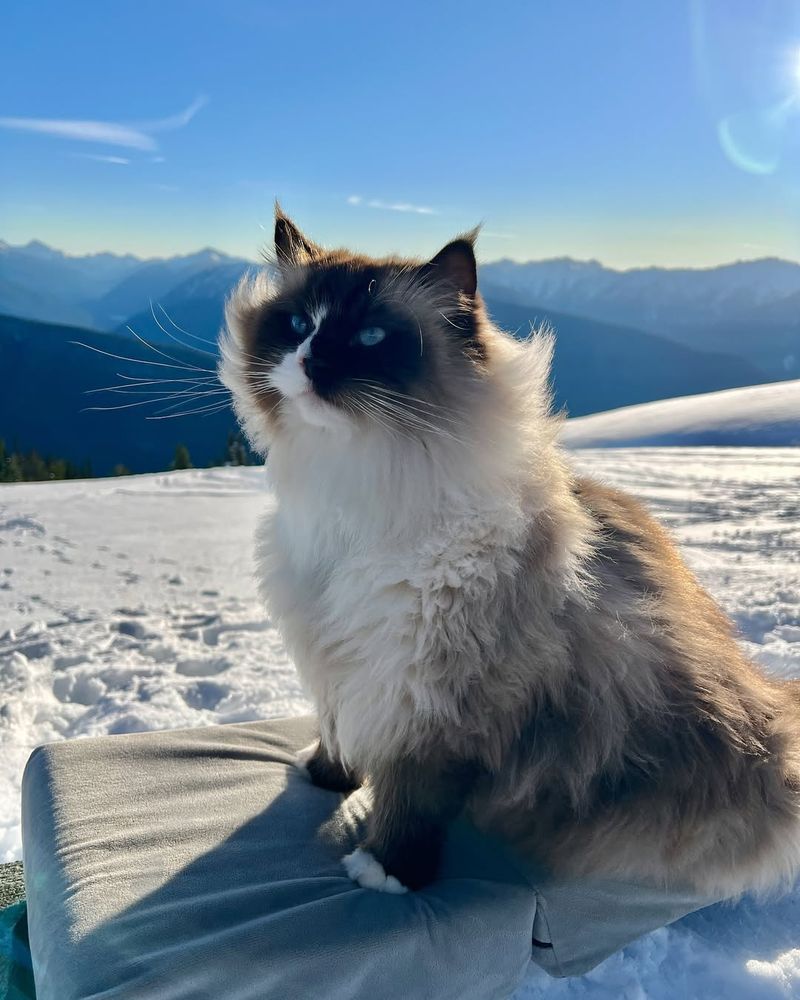
Curiosity may have a reputation for being dangerous to cats, but for outdoor felines, it’s a survival superpower. Their innate curiosity drives them to explore and adapt to their environment, uncovering new opportunities even in the harshest winter conditions. It’s the adventurous spirit that keeps them one step ahead of the elements.
This curiosity leads them to discover new hunting grounds or innovative shelters, providing them with resources that others might overlook. Their willingness to venture into the unknown is a testament to their daring nature, ensuring they remain resourceful and resilient.
Beyond survival, this exploratory instinct enriches their lives, keeping their minds sharp and bodies active. Outdoor cats, with their curious eyes and bold spirits, remind us that sometimes, the key to thriving is simply to keep exploring. Their innate curiosity is a testament to their adaptability and tenacity, proving that a little adventurous spirit can make winter a season of opportunity.
22. Self-Grooming For Insulation
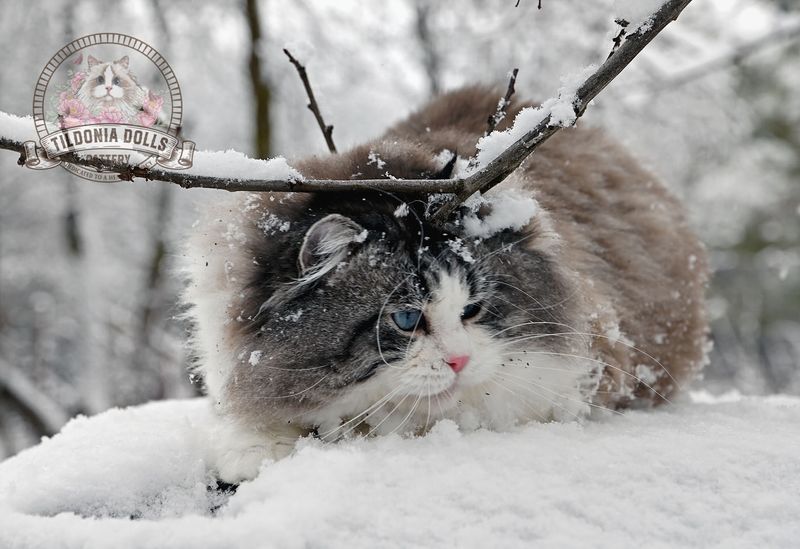
When it comes to surviving winter, outdoor cats know that looking good isn’t just about vanity—it’s a survival tactic. Their self-grooming habits ensure their fur remains in top condition, providing essential insulation against the cold. It’s a beauty regimen with a practical twist, proving that sometimes, looking your best is also about feeling your best.
Grooming helps to distribute natural oils throughout their coat, enhancing its water-repellent properties. This keeps them dry, even when snowflakes land on their fur. It’s like wearing a waterproof jacket, minus the bulk.
Additionally, grooming removes loose fur and prevents matting, maintaining the insulating properties of their coat. Outdoor cats, with their meticulous grooming routines, demonstrate that sometimes, the key to surviving the winter chill is simply to keep up appearances. Their self-grooming is a testament to their diligence and adaptability, showcasing how they maintain their edge in the frosty wilderness.

